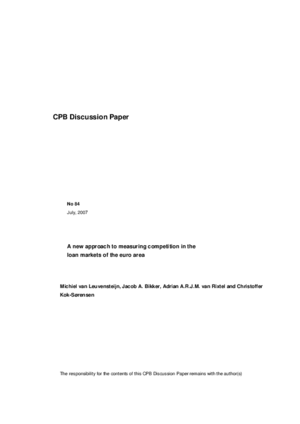A new approach to measuring competition in the loan markets of the Euro area.
A caveat of the Boone-indicator may be that it assumes that banks generally pass on at least part of their efficiency gains to their clients. Like most other model-based measures, this approach ignores differences in bank product quality and design, as well as the attractiveness of innovations. We measure competition on the lending markets in the five major EU countries as well as, for comparison, the UK, the US and Japan.
Bearing the mentioned caveats in mind, our findings indicate that over the period 1994-2004 the US had the most competitive loan market, whereas overall loan markets in Germany and Spain were among the best competitive in the EU. The Netherlands occupied a more intermediate position, whereas in Italy competition declined significantly over time. The French, Japanese and UK loan markets were generally less competitive. Turning to competition among specific types of banks, commercial banks tend to be more competitive, particularly in Germany and the US, than savings and cooperative banks.
